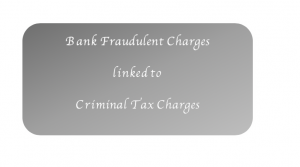Michael Avenatti’s Indictment

The temptation to use unfilled or altered tax returns as well as doctored financial statements for purposes of securing a bank loan, while not common, does occur. This practice typically occurs where an individual is faced with financial difficulties and sees no other way out. The consequences of submitting false documents including unfiled and false returns are strong evidence of the willful failure to file income tax returns as well as income tax evasion.
Recently convicted in New York for trying to shake down Nike, “Creepy Porn Lawyer” Michael Avenatti(“Avenatti”)must now travel to California to face multiple charges. Among the charges in the 36 count indictment, .
The discussion that follows is limited to the practice of using false tax and financial documents for purposes of securing bank loans and the criminal tax consequences associated therewith.
According to Counts 31 and 32 of the indictment, between 2014 and 2016, Avenatti obtained three loans from Peoples Bank on behalf of companies that Avenatti either owned or controlled. The loans included an $850k loan to GB LLC (the “January 2014 loan”), a $2,750m loan to Avenatti’s law firm, Eagan Avenatti, LLP (“EA”) (the “March 2014 loan”) and a loan to EA in the amount of $500k (the December 14, 2014 loan”).
The Indictment
The indictment alleges that in order to secure the March 2014 loan, Avenatti provided People’s Bank with false and fraudulent individual and partnership income tax returns as well as false and fraudulent financial statements, including a 2011 unfiled individual income tax return reflecting adjusted gross income of $4.5m and a tax due of $1.5m. Avenatti also provided the bank with a personal financial statement which failed to disclosethat Avenatti still owed the IRS $850k in unpaid personal income taxes for 2009 and 2010.
In addition to his personal return and financial statement, Avenatti provided the bank with a copy of the EA’s unfiled partnership return(Form 1065) for 2012 reflecting gross income of $11.5m and ordinary business income of $5.8. In October of 2014 Avenatti filed the 2012 partnership return for EA with the IRS. The partnership return filed with the IRS materially differed from the partnership return submitted to the bank. The filed return reflected $6.2m in gross receipts compared with the $11.5m on the return submitted to the bank. Furthermore, the partnership return filed with the IRS reflected only $2.1m compared with the $5.7m in operating income.
In support of the December 2014 loan, Avenatti submitted a balance sheet for EA reflecting a cash balance of $712k as of September 2014, even though the true balance was only $27k. Avenatti also submitted a personal financial statement as of November 1, 2014 which failed to disclose the unpaid 2009 and 2010 tax liability to the IRS. In furtherance of the December 2014 loan application, Avenatti also provided the bank with copies of his unfiled U.S. individual income tax returns for 2012 and 2013, respectively reflecting $5.4 and $4m in income and estimated tax payments of $1.6m and $1.2m. Furthermore, the 2013 individual return reflected $103k in federal withholding.
According to the indictment, Avenatti last filed individual income tax returns for the 2010 tax year but failed to file individual income tax returns for the tax years subsequent thereto. In addition, Avenatti failed to file partnership and corporate returns.







